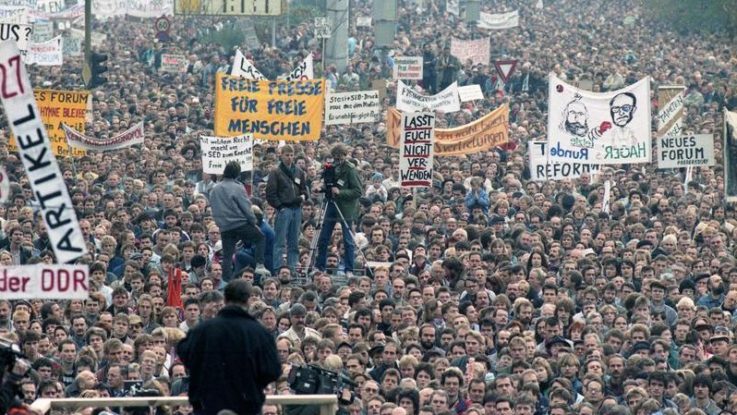
The 1980s had its own cottage industry of books and articles predicting the decline of American power. Experts argued that Japan was on track to become the world’s largest economy. The Soviet Union and its sphere of influenced appeared secure, while analysts argued that the United States could not sustain its large military budgets and overseas security commitments.
But an unexpected series of events would change the zeitgeist from “The Rise and Fall of the Great Powers” to the “Unipolar Moment.” In August of 1989, a series of uprisings in Eastern and Central Europe began a process that eventually brought down the Soviet Union itself.
In a recent Project Syndicate article, Former Swedish Prime Minister and Foreign Minister Carl Bildt “Remembers the Miracle of 1989.”
On August 23, two million people formed a human chain stretching 372 miles (600 kilometers) through Estonia, Latvia, and Lithuania, calling for independence. The timing of the so-called Baltic Way was no accident. Exactly 50 years earlier, Hitler and Stalin had entered into a secret non-aggression pact, whereby Eastern Europe was to be divided between Nazi Germany and the Soviet Union. That paved the way for World War II, and immediately spelled the end of freedom and independence in the Baltics.
But the central, potentially explosive arena in 1989 was the so-called German Democratic Republic (GDR) – that is, communist East Germany. This was essentially a garrison state, built for the protection of five Soviet armies – spanning 19 divisions and comprising 500,000 soldiers – that had been stationed there ever since 1945. Although the Berlin Wall became a powerful symbol of Europe’s bifurcation after August 1961, it is worth remembering why it was needed in the first place: to prevent the collapse of the GDR, and thus of the Soviet outer empire in Europe.
In Exit from Hegemony, we argue that the collapse of the Soviet system showcases how transnational “counter-order” contention can bring down international orders. We look closely at how the very same processes that, by 1991, transformed the United States into a global hegemonic power are now working to erode American leadership.
For more on what happened in 1989, check out not only Carl Bildt’s article but also this detailed discussion by University of Michigan historian Ronald Grigor Suny.

